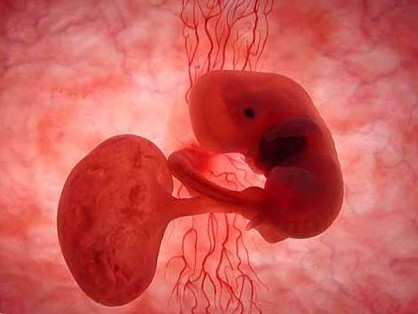
Research on human embryos has caused much controversy many years ago. Significant advances in the field of stem cell research in recent years, especially the editing techniques of human embryos, have determined that the operational guidelines in this field must keep pace with the times. Therefore, the International Committee on Stem Cell Research (ISSCR), established in 2002, has published new guidelines for stem cell research. The Commission hopes that changes in such guidelines will alleviate various ethical concerns and avoid strict government regulations that will prevent science from moving forward. In 2006 and 2008, guidelines for adhering to research and clinical translation of embryonic stem cells have been published. The new guidelines for this release include more research areas, including human embryonic gene editing techniques that have generated significant developments at the same time last year. Charles Murry, a member of the committee from the University of Washington, said: "Self-constraints are the best constraint. The entire biopharmaceutical industry is ready to strike a balance between rapid development and safe, ethical experimental methods."
The new guidelines recommend that all research projects that use embryos to produce stem cells, including human embryo manipulation, be reviewed and that such projects should be submitted to the Embryonic Stem Cell Research Oversight Committee (ESCRO) for monitoring. Scientists have said before that this supervisory committee is not welcome to intervene in their research, and it is likely that this bureaucratic review will be resisted in more research fields. Murry said: "No scientist or doctor will be happy when the new regulations are officially implemented." But the introduction of new regulations is necessary, "it can avoid relatively sensitive research in the absence of industry standards."
At the same time, the new guidelines aim to clear the barriers for the use of induced pluripotent stem cells (iPS cells). This pluripotent stem cell is not obtained from the embryo, but can be differentiated into any kind of cell on the human body like the embryonic stem cell. The committee has made it clear that the regulations for embryonic stem cells do not apply to the induction of pluripotent stem cells and their passage cells, but rather to the recruitment of donor cells. But in fact, not every research institute can clearly know what kind of cells are induced pluripotent stem cells.
Although there are no clear reasons for the 14-day time limit for the in vitro culture of human embryos, this new standard continues to (temporarily) enforce this provision. Related experiments reported in two articles published on May 4th make this 14-day limit likely to break. Discussions on whether this provision should be reformulated are also being carried out enthusiastically. Ali Brivanlou, a stem cell biologist from Rockefeller University, said: "The International Committee on Stem Cell Research has raised concerns about these important issues and has also discussed it. But we also need to recognize the benefits and disadvantages of changing this 14-day limit. â€
The committee also highlighted the warning they have been warning: researchers should not over-emphasize the medical value of stem cell experiments. There are too many hype reports about this kind of experiment, which has caused the world's gene therapy for this unconfirmed and often ineffective risk. Murry said: "We need to combat the exaggeration and inaccuracy of those scientific reports, especially for researchers to avoid the use of Wang Po to sell melon when they talk about the possibility of their results in clinical application."
Notebook Color Doppler Ultrasound Machine
Notebook Color Doppler Ultrasound Machine,Heart Color Doppler,Ultrasound Machine For Cardiac,Color Doppler Ultrasound Machine
Mianyang United Ultrasound Electronics Co., Ltd , https://www.uniultrasonic.com